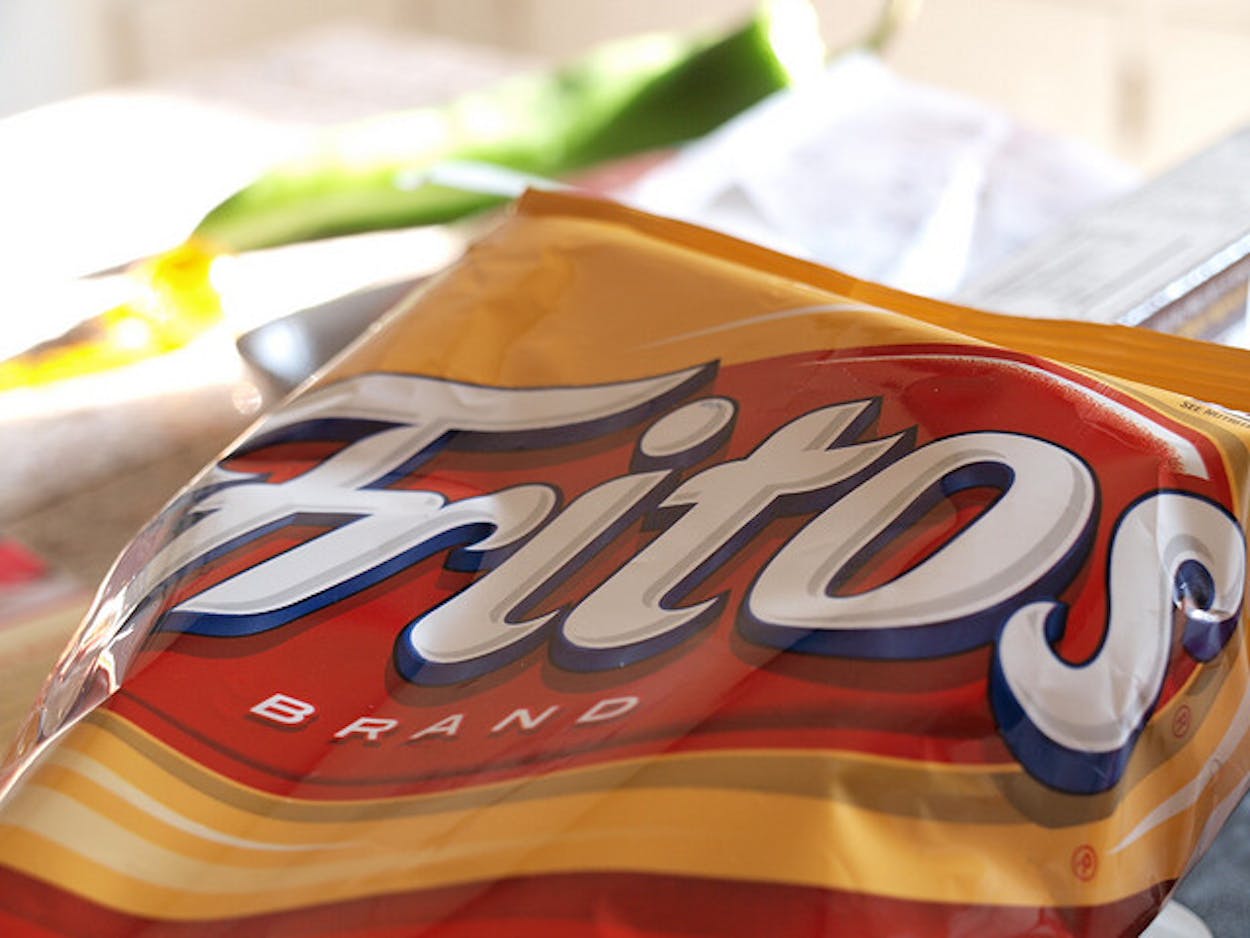It is now officially the year of Frito Pie.
Earlier this month, we wrote about how New York City French chef Daniel Boulud flipped for it. But he was just riding the wave: New York magazine and the New York Times had already pronounced Frito Pie as trendy, and the foodie magazine Saveur put Frito Pie on its annual “Saveur 100” list—along with homemade jalapeno poppers, fresh chorizo, and San Antonio Tex-Mex.
Now, as part of a series of stories connected to the Super Bowl, Peter Smith of Smithsonian.com weighs in with a post called “Frito Pie and the Chip Technology that Changed the World:”
The curvy chips crinkle and crunch. Top the salty, golden corn chips with chili and you’ve got yourself a Frito pie, sometimes portioned out right inside the silvery, single-serving bag. The Frito pie is also known as a “walking taco,” “pepperbellies,” “Petro’s,” “jailhouse tacos,” or officially—under Frito-Lay North America, Inc.’s trademarked “packaged meal combination consisting primarily of chili or snack food dips containing meat or cheese corn-based snack foods, namely, corn chips”—the Fritos Chili Pie®.
Smith goes on to tell how C.E. Doolin bought the recipe for “fritas” (and a potato ricer!) from a San Antonio icehouse owner named Gustavo Olquin in 1932, then patented a “dough dispensing and cutting device.” He also talks to Doolin’s daughter, Kaleta, who recently put out a cookbook-with-history (using the company approved name), Fritos Pie: Stories, Recipes and More.
And finally, for that extra historical flourish, Smith reminds us that all Fritos-lovers should be thankful for the nixtamalization process, which has kept the world in masa and tortillas now for some three thousand years.
TEXAS MONTHLY‘s Nicholas Lemann told much of this same story when he penned a love letter to Fritos thirty years ago. In that May, 1982, article (part of our “Texas Primer” series), Lemann puts the foodstuff in an even larger context:
The Frito is a typical second-generation Texan of Mexican origins. Its parent, the tostada, is a venerable and purely Mexican product that was never widely accepted by Anglos. The Frito itself eagerly embraced mainstream American values—mass production, packaging, distribution, advertising—and was in turn more richly rewarded by America than its parent had been. The Frito’s own child, the Dorito (introduced by Frito-Lay in 1965), tries, in classic third-generation fashion, to be more openly and proudly Mexican than its assimilated parent (hence, it tries to look like a tostada), but in its soul, it is even more American than the Frito—and sells better.
How far we’ve come.
Smith’s Smithsonian piece also tipped us to the January 13 episode of the American Public Media show Dinner Party Download, which includes a Frito Pie segment with Los Angeles chef Briana Valdez of Comal, who started a “pop-up restaurant” that describes itself as a “Texas Food Project” which “tell[s] the tale of Texas through food, exploring its culinary culture and redefining the traditional expectations of its cuisine.”
That segment begins at 40:58. (Be forewarned: Valdez is a Texas native, but this particular El Lay “redefinition” of Frito Pie is vegan, right down to the “soyrizo”):







